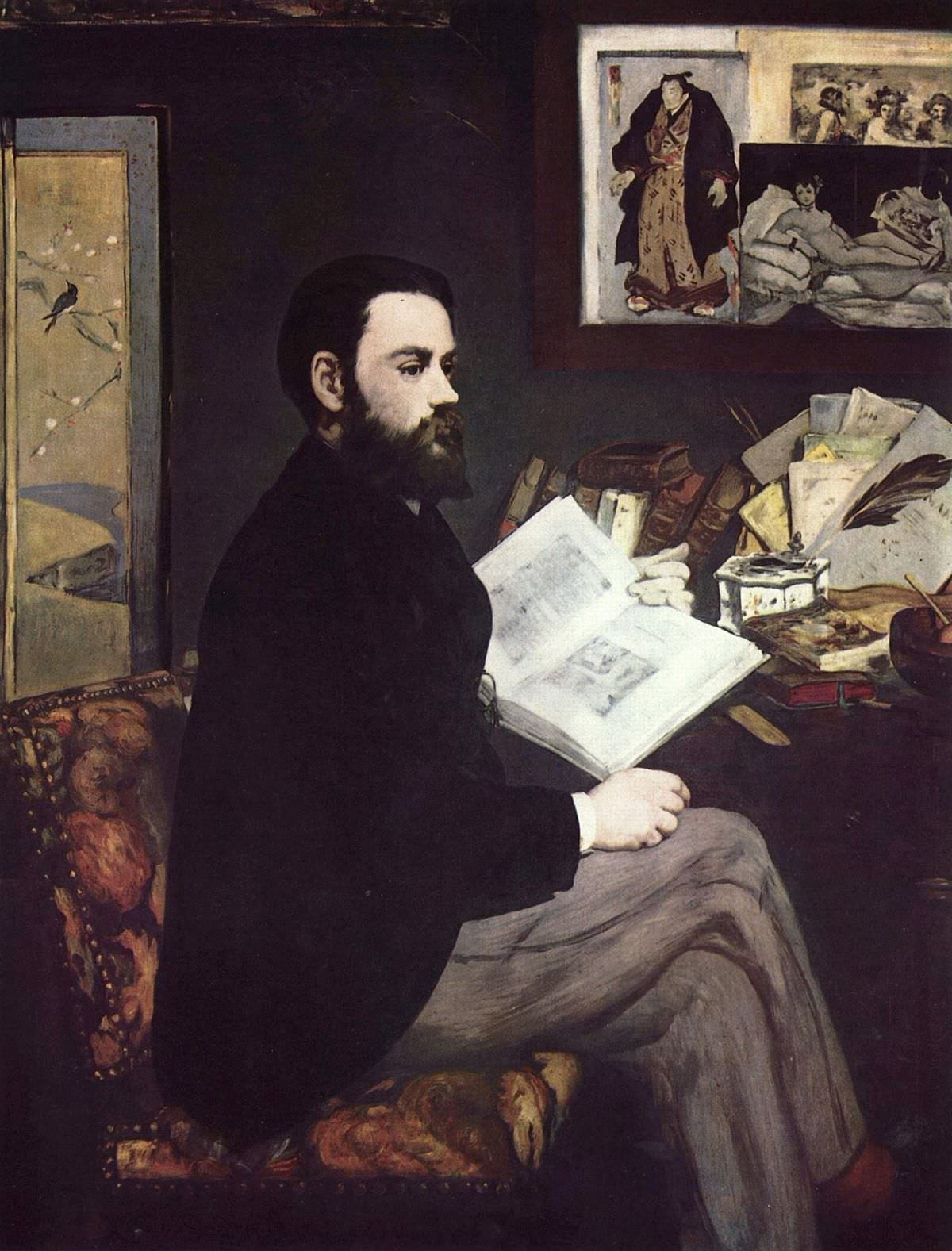Portrait of Emile Zola by Edouard Manet
Emile Zola (1840-1902) was a childhood friend of Cezanne, and it was probably the latter who introduced him to the Paris art
world (Cezanne took him to the Salon of 1861). Zola, later more famous as a naturalist novelist, began his career as an art critic. He
saw the Salon des Refuses in 1863, although his first writings on art did not appear until his review of the Salon in L'Evenement in
1866. Despite his friendship with Cezanne, Zola found his art incomprehensible and essentially a failure (he later called him 'an
aborted genius'). He became, instead, one of the earliest and most outspoken of Manet's supporters.
At the 1866 Salon he singled out a landscape by Pissarro for particular praise. Though Manet's works had been refused, in the same
review he took the opportunity to claim that Manet's place was 'marked out for him in the Louvre'. The artist and the critic probably first
met in 1866 and in 1867 Zola wrote a longer, more substantial defense of Manet. In gratitude for his support, Manet decided to paint
Zola's portrait, for which the critic sat in February 1868.
While ostensibly a portrait of Zola, the work is in fact filled with details that refer more to the artist than to the sitter. The blue
pamphlet on the desk is that which Zola wrote on Manet in 1867. Above the desk is a print or photo of Olympia in front of an engraving
after Velazquez's Los Borrachos {TheDrunkards), the latter reflecting Manet's interest in Spanish art. The Japanese print, showing a
samurai, and the Japanese screen to the left are again indications of Manet's sources of inspiration. The nude in Olympia is slightly
altered such that, rather than staring out at the viewer, she looks at Zola, so making him the focus. Zola's pose is formal and the
composition essentially traditional. His expression is impassive and the detached treatment evident in the work, as well as being typical of
Manet's approach, reflects the fact that Zola was only a tecent acquaintance of the artist.
Further, though thankful for his support, Manet felt somewhat distant from the writer's artistic aims. In the same way that Manet here sees
Zola in his own terms, Zola saw Manet's work within the context of his own aesthetic, which centered on the notion that a work of art should
be "nature seen through a powerful temperament".
